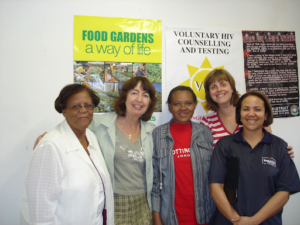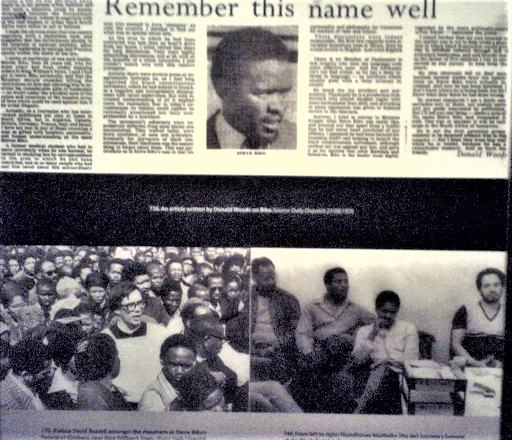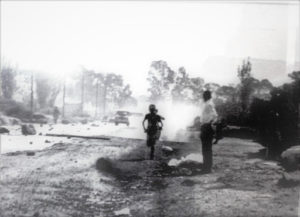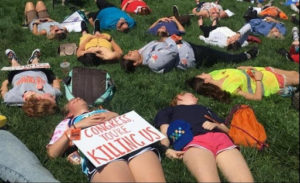INTRODUCTION
To follow is Chapter 11 in a series that is my personal transformative journey from my early years. This story began with me living as a long term unemployed single parent with two children with different fathers, never being married. I was definitely on the bottom rung of society. I lived in the highest unemployed town in the UK with the demise of its Iron and Steel, Chemical and Shipbuilding industries, thus experiencing years of poverty and ostracisation. This is the story of how, supported by a strong Christian faith, I deeply analysed and navigated my way through it all, to an absolutely fulfilling life.
In the light of what’s happening in this chaotic world today, I feel moved to tell my story with all its different facets, because my main hope is that the reader will see the human face of the marginalised. Then, hopefully, gain a more compassionate understanding of all those who live on the margins of society. I hope the reader finds clues on how to make connections with people different from them, or to change the top down competitive economic system so all people are justly valued whether they were in paid work or out of paid work.
I invite the reader to pick any chapter and, if it resonates with you, to organise a zoom working group in the New Republic of the Heart community to discuss and explore any particular issue or let it inform the work you are already doing.
I acknowledge that every single one of us has our own unique experience from our own unique perspective waiting to be heard and learned from. This is simply my experience. I’d love to maybe one day hear and learn from yours.
Linda Granville
To read Chapter 10, click HERE.
◊◊◊◊◊◊◊◊◊◊◊◊◊◊◊◊◊◊◊◊◊◊◊◊◊◊◊◊◊◊◊◊
CHAPTER 11 ~ Learnings from South Africa
As I walked out the door toward the gate that would lead me to my freedom,
I knew if I didn’t leave my bitterness and hatred behind, I’d still be in prison.
~ Nelson Mandela.
In 2004, I and my colleague Samantha, a minister in training, were invited to represent the United Reformed Church ‘Women in Ministries’ group in a seminar in South Africa with other women ministers.
This visit took me away from analysing my own country’s social and economic injustices to South Africa, with its unique recent history of apartheid and deep-seated social and economic injustices. I was curious to see how, after the ending of apartheid, the people were faring. I was interested in sharing with those that I met at the seminar ways that we might work on injustice together. Though some of the issues, such as domestic violence, were universal, some terrible injustices were uniquely South African.
Our first stop was to be welcomed by Congregational church members in Austerville near Durban. Soon upon our arrival, I discovered that the citizens in the Austerville area had many challenges, especially for those on the margins. For one, the local community was divided on the campaign to close down a toxic waste plant. Its toxic smell permeated the atmosphere, however it provided most of the jobs in the area. It was also very close to the noise pollution of the nearby Durban Airport.
At the time, the government housed the non-white citizens close to the site so that these people, lacking public transport, could walk to work. In contrast, the white people protected themselves from the toxic area by building a nature reserve between them and the non-white neighborhood. Fortunately, there are now signs that all the races are mixing.
Another concern I had related to the local hospital. I found it interesting that a minister from Durban thought the hospital provided excellent care for the people. I thought she must have health insurance to afford a private hospital, since I found the public hospital to be quite dirty, and with few resources. Children often had to share a ward with adults, and those needing emergency care often would have to queue in the early hours of the morning to get in. We visited a private hospital in Durban that was absolutely clean with all the modern conveniences. A sister there told me of her worries for the public facility. She felt the conditions were only getting worse.
Another disheartening experience was visiting a volunteer project that supported abused women, a massive problem in South Africa that contributes to AIDS. “The problem,” the project coordinator told us, “is that many women don’t realise they are being abused. They think it’s normal.”
I gave him a copy of ‘The Freedom Programme’, a nine-week course developed in the UK for women that was designed to help them recognise their abuse. He thought that the challenge with instituting the Freedom Programme in South Africa would be that, unlike in the UK, there were no women’s support systems in place to assist a woman who needed to leave her husband to protect herself. There were no women’s refuges in South Africa. There was a good maintenance system, however the women would have to navigate through a very patriarchal and distrusting judiciary system to get the maintenance, which this program attempted to help with.
Another visit took us to meet a wonderful woman, Irene, who started Wentworth Aids Action Group. Initially, she voluntarily went around her local neighbourhood to simply and kindly wash those people with AIDS. Later a friend joined her, and Irene gave her paid job up to voluntarily do this full time.
Irene, Linda, Jenny (with AIDS), Sam and Vanessa
An American singing star heard of the good work she was doing and provided the money to turn an old sports hall into an AIDS testing / counselling and advice centre, and hospice.
Irene said, “This is my dream!”
She proudly showed us the plans for the second stage of the project. She especially looked proud of the planned aviaries outside the residents bedrooms so they would be able to hear the birds, as well as the garden allotments for them to grow food and medicinal plants. I was able to give her information on an organisation called ANAMED which was co set up by a dear friend of mine, Keith Lindsey, once Respond!’s Coordinator years before. He and his colleague travelled around different countries in Africa and with permission from the tribe elders, set up village co-operatives in isolated villages to grow inexpensive medicinal plants and show people how to grow them.
He was especially interested in showing them how to grow the Artemisia plant. This was a very inexpensive plant to grow, was excellent for the immune system, and did not cause the usual side effects that came with expensive pharmaceutical drugs. It was good for AIDS sufferers and especially good for those with malaria.
I passed on to her evidence of people living more wholesome lives by using it, and a booklet on how to carefully grow the plant and make Artemisia tea. I received this booklet from a seminar that Keith had previously organised in Birmingham, England which I attended, alongside an audience of doctors interested in alternative medicine. The ANAMED website showed evidence that although the Artemisia plant was not a cure for AIDS, it helped AIDS sufferers lead a longer and more fulfilling life.
Note:
My friend, Keith Lindsey, with his colleague, Dr. Hans-Martin Hirt, helped set up ANAMED. Keith has gone on to set up another charity called Discover. He and the people from that organization go into African communities who are at war with each other and, as a catalyst to break down hatred, bring people together to work on setting up community gardens for medicinal plants. I recently attended a Zoom room meeting he held with people from across Africa in which he discussed how climate change and the Covid pandemic together have drastically affected the people of Africa. As well as helping with emergency relief, friends and supporters of Discover are now generously enabling their partners to give priority to training in food security and to tree planting. He also showed how the Artemisia plant had very positive effects with Covid.
A few days later, we were taken to see a Zulu Village. We attended a Zulu dance which helped tell us the story of traditional life in the village.
The women are dancing by the river. The men find the women and begin a courtship dance. If a woman gives a man her necklace she wants to be engaged. The Zulu man has the woman’s necklace and takes it to the wise women of the tribe to test if the owner of the necklace would make a good wife.The wise women of the tribe burn the necklace and pray over the ashes to evaluate the suitability of the marriage. The chief is consulted and gives his permission for marriage. Then a feast is prepared in the ‘Women’s Tent,” and the couple are married.
I was told that if a Zulu woman ever leaves the tribe, upon her return she is humiliatingly tested in front of the whole tribe to see if she is still a virgin. Some people argue that this practice keeps AIDS at bay. Interestingly, the men do not have to suffer this humiliation.
After Sam and I left our friends in Austerville, we were flown to Johannesburg to stay in a convent and meet up with other women ministers from the Congregational Churches of Southern Africa.
They came from Mozambique, Zimbabwe, South Africa, America, Zambia and England. The women ministers from Namibia were unable to obtain visas to attend due to their gender. It was important that this group, especially from the African continent, continued to find ways to meet and support each other, being a tiny minority in a primarily patriarchal church.
In Johannesburg, violent crime permeated the atmosphere. At the bus station a man dashed past me with a policeman in fast pursuit brandishing a gun. Even sitting in the convent I could hear gunshots beyond the barbed gates outside. Every house, rich or poor, had spiked gates or barbed wire fencing, and some with electronic alarms. We were warned not to get our cameras out around the city, not even from the car window, as somebody would smash the car window, climb in and grab the camera. One of our minibus drivers swerved the bus when he received a mobile call to tell him his son had been shot outside his home.
We saw homes in Johannesburg typically owned by white people with tennis courts and swimming pool as compared to those in black townships where many lived in rows of the same shaped boxes.
All of these events moved us to look at our own faith journey as women, and together reflect on that journey in the light of other women in the bible. Spontaneous gospel singing and dancing often permeated our debates during the workshop, something I would recommend to anybody involved in difficult discussions. It always seems to shift the atmosphere of the workshop for the better.
As part of our process, we were invited to put on the table a symbol of our personal faith journey. Each person’s story had a deep sense of sadness linking personal experience to our respective countries. Some women broke down in tears as they reflected on their country’s plight through abuse, unemployment, crime, civil war, poverty, and AIDS. I was told that out of all the ministers, it was this group of women ministers that mostly dealt with AIDS. They not only had to deal with the double whammy of cultural patriarchal abuse of women, but also tribal abuse of women. Some of the women also worked in very difficult areas, dealing with violent crime and civil war.
We visited Ebenezer Congregational Church in a township outside of Johannesburg, and then visited the church’s housebound members.
Saying prayers together and then asked to give the sacraments to them, including some who were dying, was a profound privilege.
One lovely woman’s husband was killed by the South African Police during the riots years before. She saw him killed outside her front door. Having brought up ten children alone, she saw them all through university.
The next day, Sam and I were picked up from the convent by Malusi, who drove us to Soweto, another township outside Johannesburg. It was famous for its fight against apartheid. On our way, I noticed large graffiti condemning child abuse. I felt sad that such graffiti was needed.
The prevalence of women and child abuse in Africa has greatly contributed to the AIDS pandemic. Men in their ingrained patriarchal tribal culture often refuse to wear a condom, but more sadly from a Christian point of view, when the Pope (significantly a man) decreed that men should not wear condoms, this greatly exacerbated the situation. This I think has changed, but not until after millions of people had died, mostly women and children.
Malusi told us that about four million people live in Soweto. It was built purely to house the black workers in the gold mines. The houses were bond houses and anyone late with payments were kicked out. After the end of apartheid, the ANC rightfully gave the title deeds back to the people.
The Hani Baragwhana Public Hospital in Soweto is the largest in South Africa. It is a medical school and has excellent facilities. It used to be a prison hospital during the World War II when soldiers were transferred from Cairo to South Africa. It was the one public hospital I saw that shone.
Another example of the challenges that the marginalized in South Africa face is that there were no phone landlines in this township, and Vodafone had a monopoly for public phones.
Malusi was proud to introduce us to the Bridgeman After Care Club in Soweto. It supported children who were not doing well at school.
He was the centre manager and took great pride in telling us how many children had passed through the Centre to eventually go onto university. After he told how high the unemployment in the area was, I mentioned Time Banks, people and organisations pooling their time and skills to do jobs for each other without payment. He then became very enthusiastic about working to set up Soweto’s first Time Bank.
Thulisle, Thuli, Linda, Busisiwe, Sibusisiwe. Lungani
Sam and I had helped the many children in different classrooms. Before our departure we enjoyed singing the South African National Anthem with all of them. Each verse included five out of eleven official languages of South Africa Xhosa, Zulu, Sesotho, Afrikaans and English.
While joining in the joyful singing with these children, I was reminded of their parents’ terrible history. On June 16th, 1976 children and young people of Soweto peacefully protested against compulsory government education policies. Many of them died on that day facing the might of the South African Police. This became a symbol of cruel white dominant power. And now the world was watching. It was a turning point for South Africa and the beginning of a new militancy in the struggle against apartheid.
This Catholic church was the only church kept open in Soweto during the riots. Activists held their secret meetings here and bullet holes can still be seen left by the South African Police. Nelson Mandela came here to address the people after his release. We were shown under the cover of the Lord’s Table where a South African policeman had machine-gunned it before firing at the people in the church.
A large Fresco at the front of the church
Soweto’s famous Black Madonna
We visited the home of Nelson and Winnie Mandela in Soweto where they lived together before his imprisonment. Rev. Kakasa then took us to see the Apartheid Museum in Johannesburg.
She led us to a large wall with list upon list of names of people killed by the South African Police. I was taken aback when she pointed me to her brother’s name.
The following words were hanging in the museum:
The Story Of Soweto. June 16th 1976
‘June 16th 1976 in Soweto was the turning point in history when school children took
part in a peaceful protest against the inferior Bantu education system and the
enforcement of Afrikaans as a medium of instruction. In the days that followed 160
simultaneous similar protests took place round the country. On this fateful day in
Soweto the police shot dead 48 adults, 8 youths, and 6 children.
There was no turning back after this landmark event which created a new generation
of youth who demanded swift changes at any price. Increased government repression
fuelled by deliberate engineered violence, perpetuated an endless cycle of turmoil
and mayhem. Finally the government under pressure from both inside and outside the
country was forced to unban the ANC and released Nelson Mandela on 11 th February
- The first free and fair elections took place on 23 rd April 1994
And Nelson Mandela was elected President.’
This photograph taken in 1986 absolutely astounded me and showed to what length the then apartheid government regime would go to implement keeping segregation in place.
An article written by Donald Woods about Steve Biko 1976
Steve Biko
Immortalized in Richard Attenborough’s film ‘Cry Freedom’
One of many other poignant pictures in the museum held these words:
‘Those children should be the martyrs because they have died for the cause.
They had to leave this country at an early age.
They had to put their heads on a block to achieve what we have today.
Some were fortunate they were able to come back.
Some died where they went in some parts of Africa.
I think I was there as a messenger and as a messenger I did my job.’
At the end of apartheid, between 1996 and 2003, Nelson Mandela founded the Truth and Reconciliation Commission (TRC). It was chaired by Bishop Desmond Tutu. Alex Boraine was the deputy chairman. It looked for restorative justice, bringing together the perpetrator and the perpetrated. The commission invited witnesses who were identified as victims of gross human rights violations to give statements about their experiences, and selected some for public hearings. Perpetrators of violence could also give testimony and request amnesty from both civil and criminal prosecution.
Despite some flaws, it’s generally (although not universally) thought to have been successful. It was seen by many as a crucial component of the transition to full and free democracy in South Africa.
As the successor organisation to the TRC, the Institute for Justice and Reconciliation was established in 2000.
A few days after visiting the museum each of the women delegates including myself were asked to each go to a different church to give a talk. It was the anniversary of South Africa’s Liberation Day. In my talk I shared my faith journey translated into Sohto, and the minister told me how it resonated with the women in his congregation. I couldn’t help but join in the dancing amid the lively rhythm of the gospel singing. Amid so much poverty, the generosity of these people was tremendous. There were several collections for different particular needs, but always given enthusiastically amidst dancing and joyful singing. All this was completely different from church collections I had experienced at home.
The overall impression of South Africa for me was of a nation finding itself. New laws that gave every citizen of every race the opportunity to rise above their terrible history was evident. However, I also saw South Africa trying to find a way through the thick dark cloud of AIDS, violent crime, abuse of women and children, unemployment, corruption and poverty. I was able to bring good news (in their words) to many organisations that I visited, for example, The Freedom Programme, Time Banks, and the Artemisia Plant to help with AIDS patients.
What did I learn?
The Truth and Reconciliation Commission was and still is a wonderful example to the world of how the hard path to forgiveness and self forgiveness could be implemented after experiencing and perpetrating such terrible atrocities.
I learned of the courage of the South African children and young people of Soweto and beyond who had risked their lives in bringing about the downfall of South Africa’s apartheid regime. They said, “Enough is enough.” I believe they left a young people’s legacy, because I’m reminded of the many children around the world today who are at the forefront of change, such as Greta Thunberg, the young child activist awakening the whole world to campaign for climate change and brought millions of schoolchildren world wide out of their classrooms. She also said, “Enough is enough.”
Today in America, young people are at the forefront of fighting for gun reform. One of the first and most well-known of all of the recent gun reform movements, March for Our Lives, was founded by Emma Gonzales and David Hogg, survivors of the Parkland shooting at Marjory Stoneman Douglas High School in 2018 after 17 of their classmates were shot dead. It must have taken a great act of courage in the midst of their grief and trauma to stand tall, tell the politicians and the whole of America, “Enough is enough.” Although adults have always campaigned on gun reform, the focus now is on the young people.The March for Our Lives campaign and six other young people’s campaign groups for gun reform around America are still alive and kicking, and pressing on relentlessly with their efforts.
‘Kill in’ on Capital Hill, March for Our Lives Washington DC 2018
In South Africa, I personally felt a great vibrant spirit of generosity. I heard the hope in people’s singing. I saw the determination of wonderful grassroots people striving to help their neighbours and tend to their practical and spiritual needs in ways that were holy. I saw work being done to give women more resources to eliminate the double whammy of cultural plus tribal patriarchal women abuse. I saw the determination of children grasping their new found opportunities to make their South Africa worthy of their parents’ struggle. I saw Irene’s dream of a new AID’s advice centre and hospice come true, all simply from her little act of kindness to voluntarily wash all those in her street who were seriously ill with AIDS. I feel this in turn can encourage us all to never underestimate where one little act of kindness can lead us and, like Irene, to never ever give up on each of our personal and collective dreams toward a more holistic, compassionate world that works for all.
This visit to South Africa has been a great privilege.
To read Chapter 10, click HERE.


















0 Comments